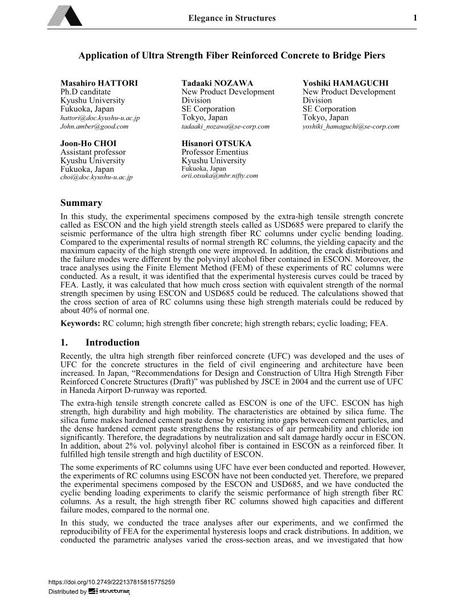Application of Ultra Strength Fiber Reinforced Concrete to Bridge Piers

|
|
|||||||||||
Détails bibliographiques
| Auteur(s): |
Masahiro Hattori
Tadaaki Nozawa Yoshiki Hamaguchi Joon-Ho Choi Hisanori Otsuka |
||||
|---|---|---|---|---|---|
| Médium: | papier de conférence | ||||
| Langue(s): | anglais | ||||
| Conférence: | IABSE Conference: Elegance in structures, Nara, Japan, 13-15 May 2015 | ||||
| Publié dans: | IABSE Conference Nara 2015 | ||||
|
|||||
| Page(s): | 330-331 | ||||
| Nombre total de pages (du PDF): | 8 | ||||
| Année: | 2015 | ||||
| DOI: | 10.2749/222137815815775259 | ||||
| Abstrait: |
In this study, the experimental specimens composed by the extra-high tensile strength concrete called as ESCON and the high yield strength steels called as USD685 were prepared to clarify the seismic performance of the ultra high strength fiber RC columns under cyclic bending loading. Compared to the experimental results of normal strength RC columns, the yielding capacity and the maximum capacity of the high strength one were improved. In addition, the crack distributions and the failure modes were different by the polyvinyl alcohol fiber contained in ESCON. Moreover, the trace analyses using the Finite Element Method (FEM) of these experiments of RC columns were conducted. As a result, it was identified that the experimental hysteresis curves could be traced by FEA. Lastly, it was calculated that how much cross section with equivalent strength of the normal strength specimen by using ESCON and USD685 could be reduced. The calculations showed that the cross section of area of RC columns using these high strength materials could be reduced by about 40% of normal one. |
||||
